Stock moldings are an affordable and stylish way to increase your home’s architectural charm. These pre-cut, pre-designed moldings come in a variety of profiles and styles, making it easy to find a look that complements any door in your home. Below, check out 13 easy door surround profiles made from stock molding to get inspiration.
Arch Arrival Molding
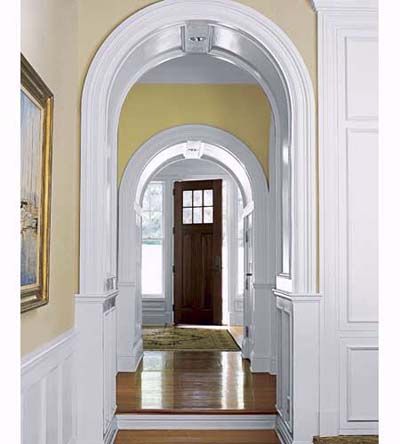
Elegant arched casings can unify trimwork and direct perspective toward the front door, as demonstrated in the design above by Greenwich, Connecticut, architect Jay Haverson. These architectural elements enhance the space’s visual appeal and create a sense of grandeur and sophistication.
Arched casings work particularly well in homes with high ceilings, as arches draw the eye up. This style can make a room feel larger and more open.
Molding With Smooth Transitions
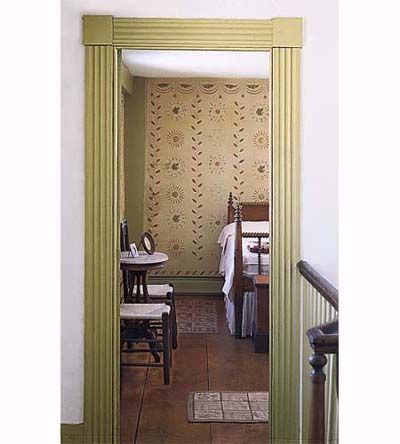
The right door casing can conceal the transition between the wall and the jamb. Victorian-era smooth transition designs frequently featured fluted boards butted against corner blocks, and homeowners who seek such classic looks should consider smooth transitions. These types of casings are symmetrical on the inside and outside edges, and create a uniform pattern.
Deep Layered Molding
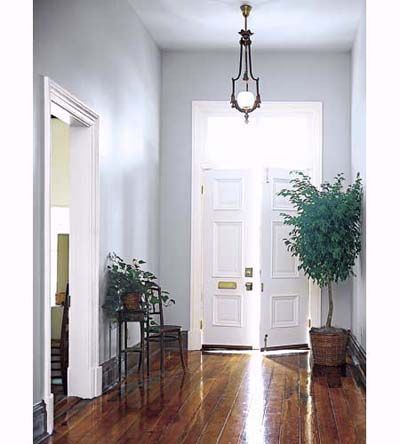
Tapered casings were popular in Federal and Italianate homes, and later in Greek Revival and Colonial Revival styles. These casings are made of several built-up profiles that feature mitered cuts. This layered approach creates a sense of dimension and shadow, adding visual interest to doorways and enhancing the architectural character of a space. It provides an opportunity to mix different types of moldings to create a rich, cohesive design.
Ripple Effect Stock Molding
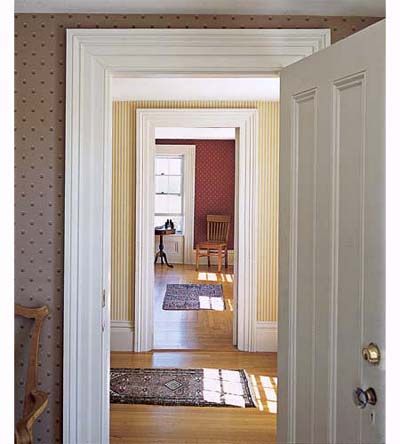
The wide, rippling profile above would be equally at home in an 1880s Victorian-era house or a new Colonial Revival. You can build up this casing starting at the door jamb’s inside edge, and complete it with various materials or stock pieces of various sizes.
Molding With Soft Edges
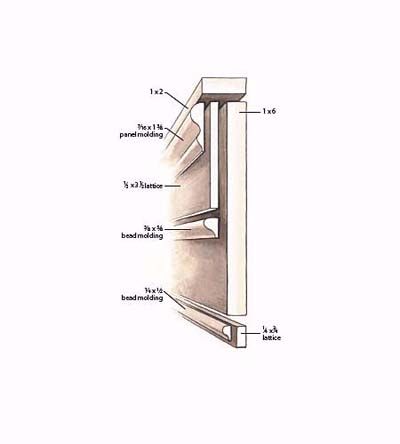
To create a softer, more refined look, use one-inch by two-inch boards and lattice for your door surround, and soften them with curved end-bead and panel moldings. This combination of straight and curved elements adds depth and visual interest to your project.
Built-out casings can appear larger once you stain them. Painting them, alternatively, gives them a lighter, more subtle look.
Door Molding at Great Heights
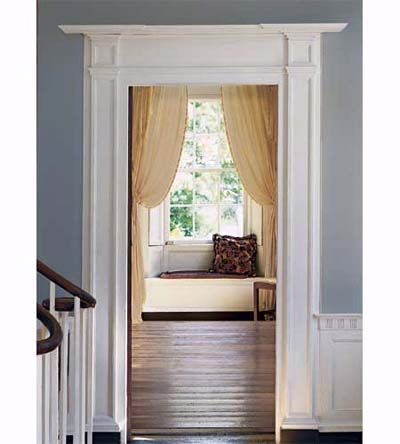
Many modern homes feature lofty, open ceilings, but don’t always include thick, over-the-door trim. Consider incorporating taller casings or adding transom windows when designing door surrounds with rooms that feature high ceilings. This will maximize the visual impact.
Molding Fit for the Gods
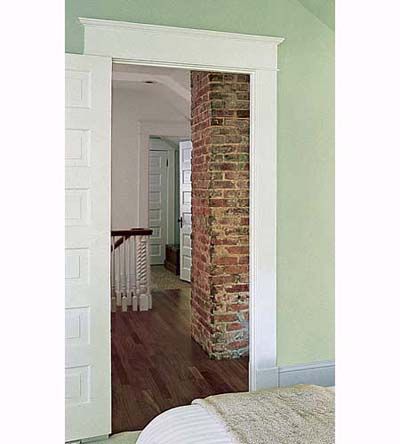
Door entablatures that were common in Georgian- and Federal-style houses were especially decorative. These often featured pedimented tops inspired by ancient temples and stacked moldings that incorporated dentil and Greek beaded designs. This type of door surround can serve as a focal point of a room, and reflect the periods’ classical influences.
Tall Order for Doors
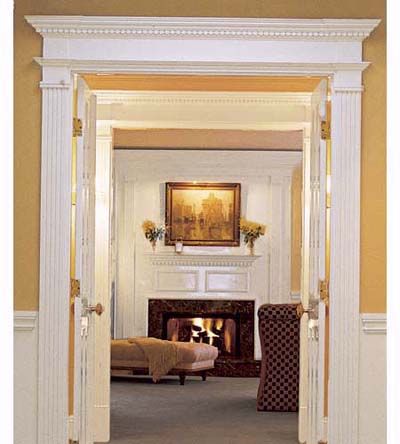
The type of door surround above, which is perched above fluted pilasters, features the classical three-part order of an entablature. Rake molding represents the architrave. This design approach adds visual height to the doorway and creates a sense of proportion and balance that is characteristic of classical architecture.
Molding Stepping Out
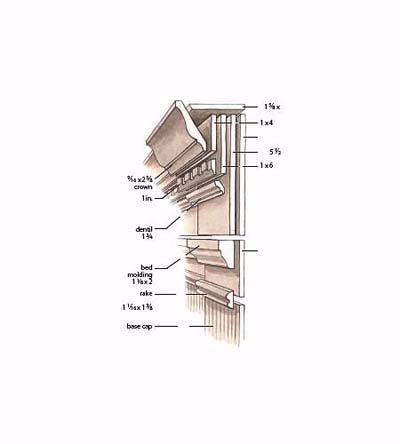
Place a one-inch by 10-inch board above the architrave to form a frieze and create an elaborate entablature. The frieze serves as a base for bed, dentil, and crown moldings, and forms a sophisticated cornice. Mitered returns surround the entablature’s built-out ends, which completes the classic look.
You can achieve this type of custom, high-end appearance using readily available materials. Each layer adds a level of intricacy and beauty.
Window Molding Dressing
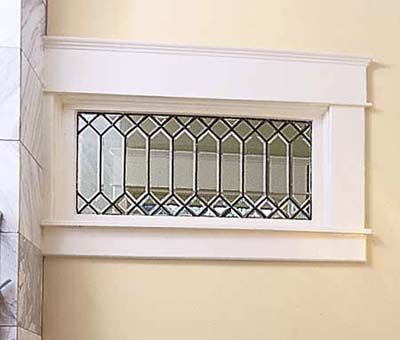
To create visual harmony in a room, match the proportions and profiles of window casings to the door surrounds. Windows have the same head and leg casings as doors, but they also have a bottom ledge that consists of the sill and the apron. The sill extends slightly beyond the width of the legs, while the apron runs directly under the stool, and is flush with the leg casings’ outer edges. Blending window and door trims creates a cohesive interior aesthetic.
Doorway Arch of Triumph
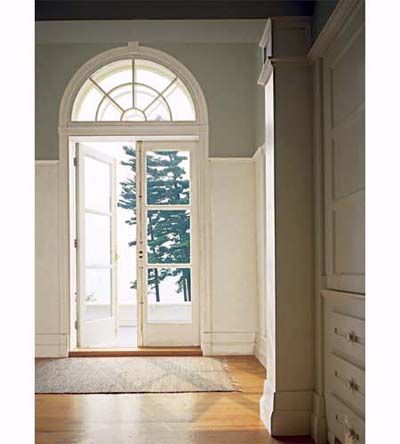
Archways are becoming increasingly popular. Arched doorways add a touch of elegance and can make spaces feel more open and inviting. They’re particularly effective in creating visual flow between rooms, and softening transitions in open floor plans.
Molding Case in Point
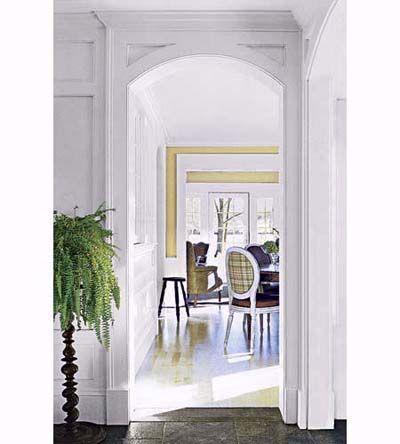
Classical arched casings were a hallmark of Georgian-style houses in the late 1700s . These casings frequently include fanlight transoms over square doorways, which soften severe angles and allow more natural light into entryways. This combination of square and arched elements creates a balanced and visually appealing entrance that has stood the test of time.
Tall and Curvy Molding
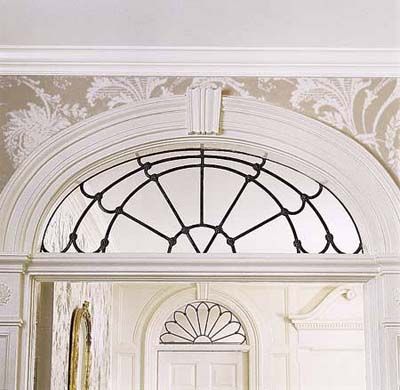
Intricately detailed Italianate houses typically included tall curved-top doors and arched windows during the Victorian era. These architectural features add a sense of drama and sophistication to homes’ exteriors and interiors. The curved lines of these doorways and windows contrast beautifully to typical Victorian detailing, and collectively create a harmonious balance between straight and curved elements.
On a Mission With Molding
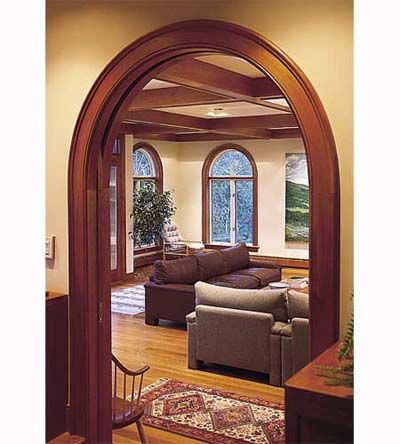
Interior arches in 1920s Mission-style homes echoed Spanish-influenced barrel-tile roofs and undulating parapets. These arched doorways and passages create a sense of flow and continuity between indoor and outdoor spaces, a key feature of Mission Revival architecture.
Keep Molding Simple
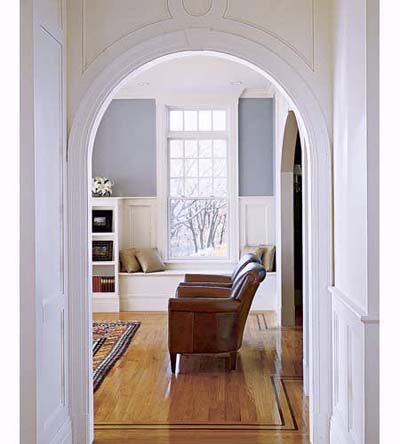
Trimming out an archway has been a historically complex process that has involved forcing straight wooden moldings through a series of complicated kerf cuts. Contemporary kits have simplified the trim process significantly, which makes arched doorways a more viable option for a wider range of homeowners and do-it-yourself enthusiasts.
Create a Doorway Curve
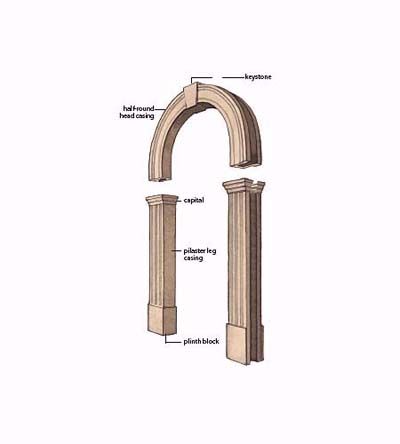
Consider investing in a professional kit to create a half-round archway that features a keystone on top and fluted pilasters on the sides. This type of kit makes it possible to add architectural interest to doorways without the need for extensive carpentry skills or specialized tools.
Be Flexible With Your Molding
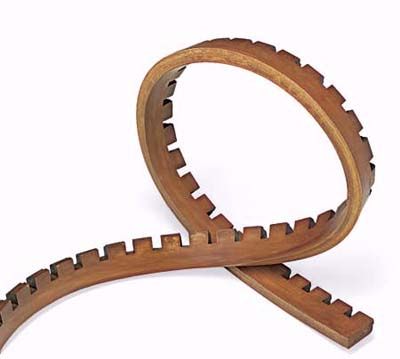
Use flexible polymer molding to create arches that are easy to trim. This material is more affordable than custom wood curves, and you can cut it with standard woodworking tools. You can also paint it or stain it, and it resists rot, warping, and cracking. Some products even mimic wood’s natural grain.
If you decide to use flexible moldings, consider the tips below from This Old House general contractor Tom Silva:
- Apply multiple coats of stain or use spray-on finish for a better match with wood trim.
- Create a template for custom jobs by tracing the arch outline onto kraft paper.
- Use flexible molding only where bending is necessary, as it’s more expensive than straight profiles.
- Use polyurethane construction adhesive and plenty of trim screws to prevent drooping.
